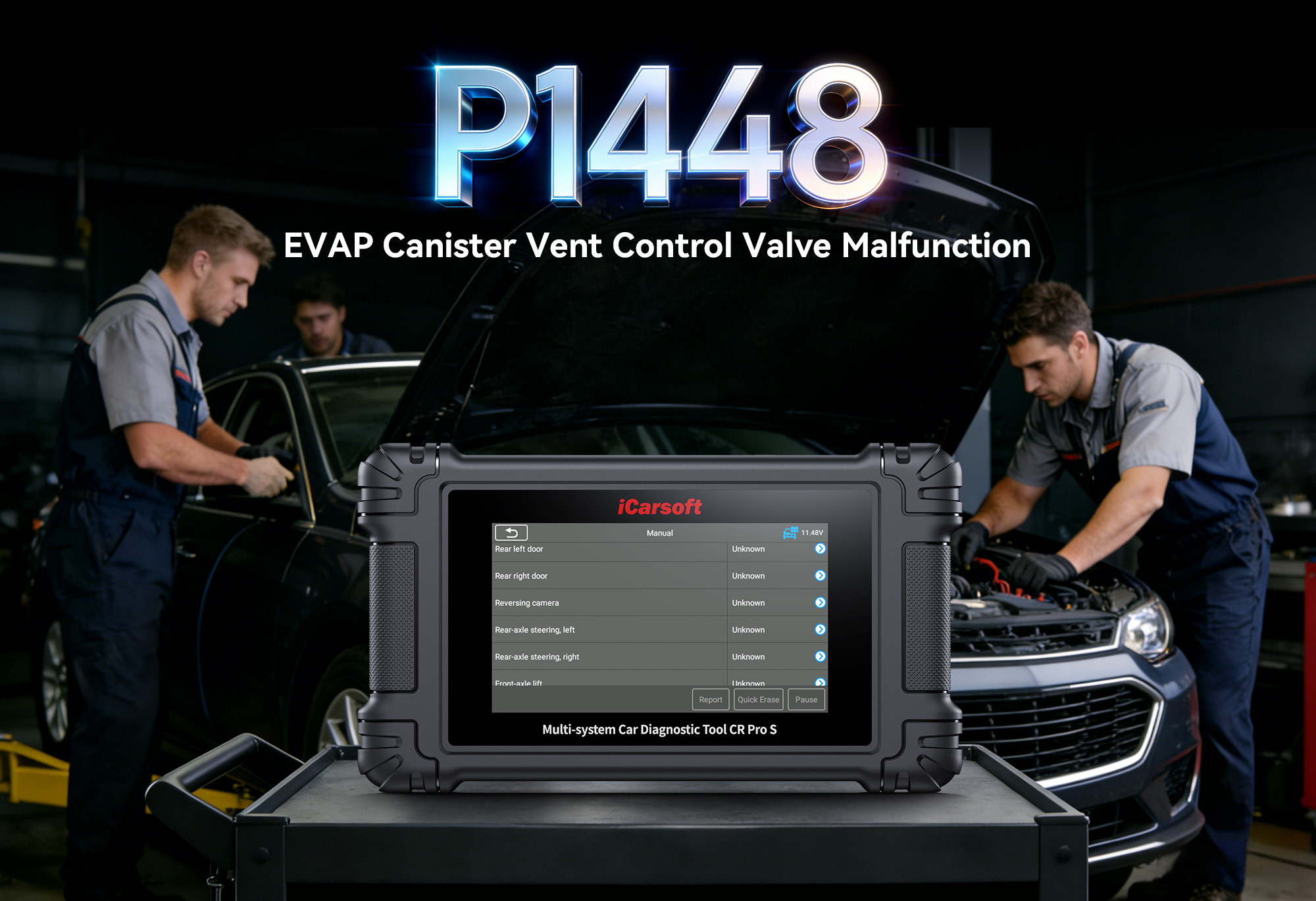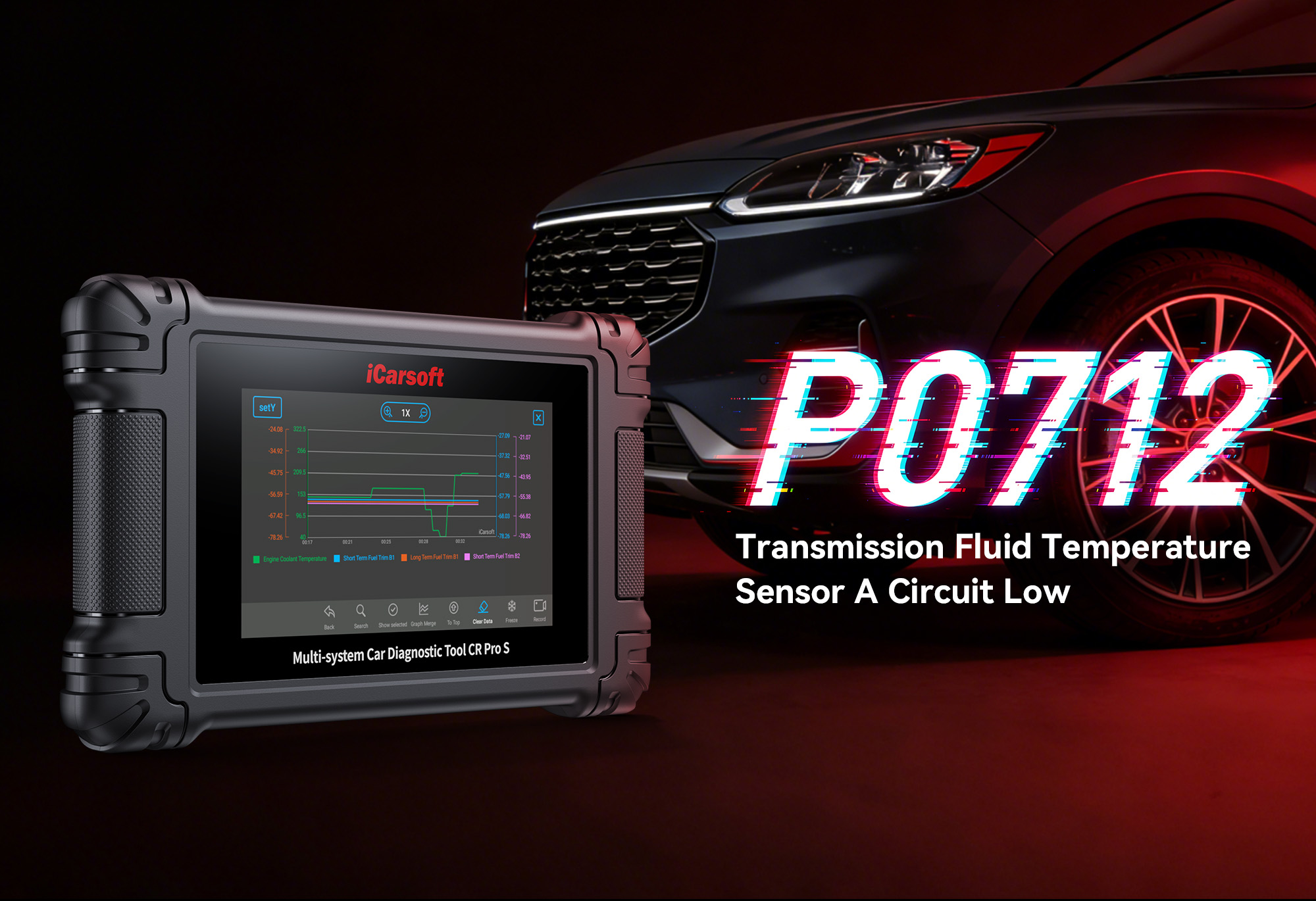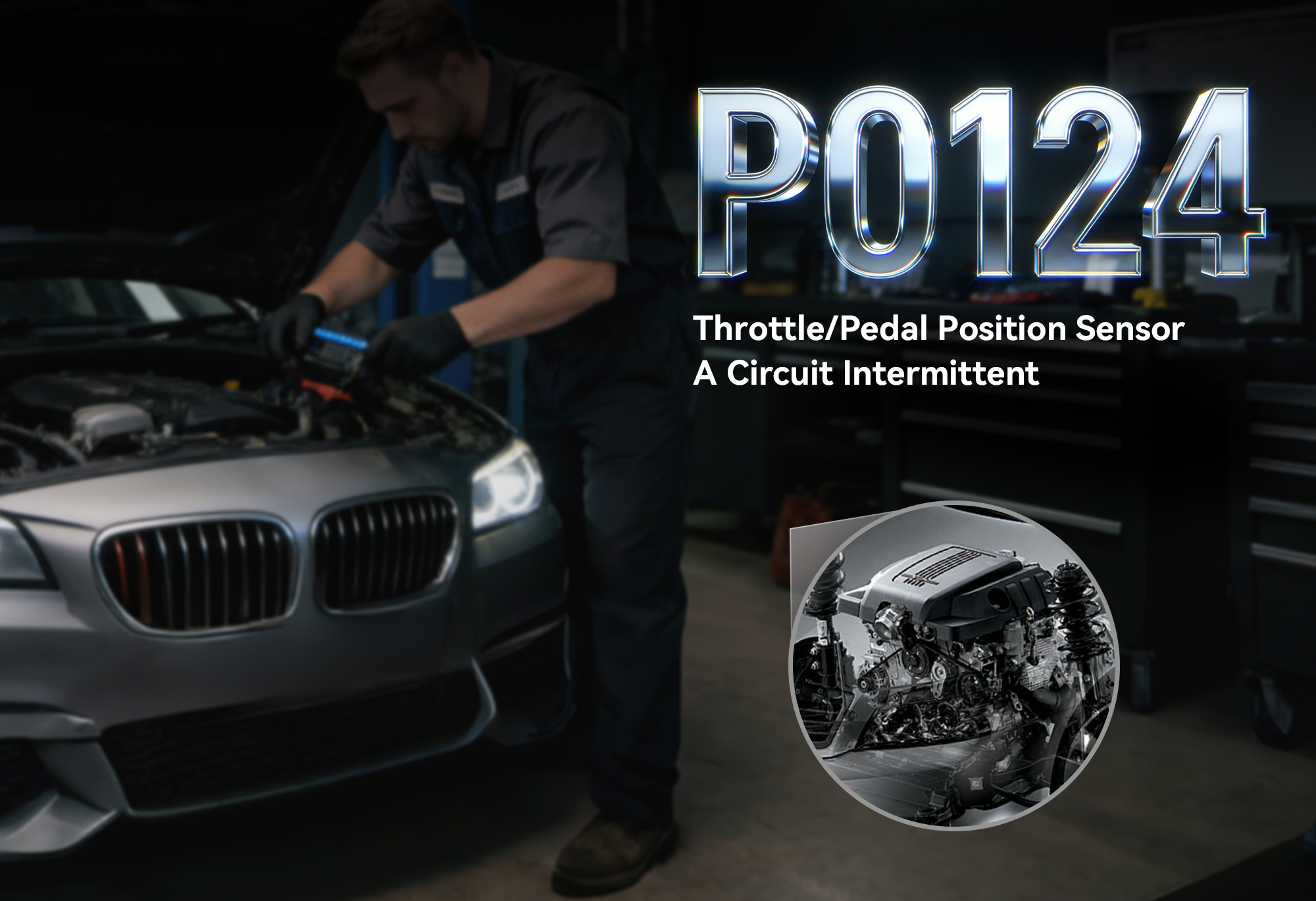Diagnose & Clear P069E with iCarsoft CR Ultra: Fix ECM/PCM Power Relay "D" Control Circuit Low
If your check engine light illuminates and you notice intermittent engine stalling, delayed startup, or sudden power loss while driving, a diagnostic scan will likely return P069E. This OBD-II code stands for "ECM/PCM Power Relay 'D' Control Circuit Low," indicating the Engine Control Module (ECM) or Powertrain Control Module (PCM) has detected an abnormally low voltage in the control circuit of power relay "D"—a critical component that supplies steady power to the ECM/PCM and its associated systems.
The ECM/PCM relies on dedicated power relays to maintain consistent voltage (typically 12V) for its operations, including fuel injection timing, ignition control, and sensor data processing. Relay "D" specifically manages power to key ECM/PCM circuits; a low-voltage signal here disrupts the module’s ability to communicate with sensors and actuators, leading to unpredictable engine performance. Left unaddressed, P069E can cause complete engine shutdown or permanent ECM/PCM damage.
Basic scanners may only flag "ECM relay low" but can’t test relay activation or isolate wiring faults. The iCarsoft CR Ultra—with its bi-directional relay control, voltage tracking, and topology mapping—solves this. Let’s explore how to diagnose and resolve P069E using this advanced OE-level tool.
 iCarsoft CR Ultra: Advanced relay control and voltage tracking for resolving P069E
iCarsoft CR Ultra: Advanced relay control and voltage tracking for resolving P069E
Understanding P069E: Causes & Key Symptoms
A low-voltage ECM/PCM power relay circuit disrupts the module’s core functions, leading to distinct performance and reliability issues:
Key Symptoms of P069E
-
Check Engine Light: Illuminates when the ECM/PCM detects relay "D" control circuit voltage below 0.5V (or manufacturer-specific threshold) for 2+ drive cycles.
-
Intermittent Stalling: The engine may shut off unexpectedly while driving, as the ECM/PCM loses power to critical circuits.
-
Delayed or No Startup: The ECM/PCM can’t initialize properly, leading to extended cranking or complete failure to start.
-
Power Loss During Acceleration: Reduced voltage to the ECM/PCM disrupts fuel and ignition timing, causing hesitation or "limp mode" (reduced power to protect the engine).
-
Erratic Sensor Readings: The ECM/PCM may misinterpret data from MAF, MAP, or oxygen sensors, leading to rough idle or increased emissions.
-
Battery Drain (Rare): A stuck-on relay may draw excess power when the vehicle is off, draining the battery overnight.
Common Causes of P069E
-
Faulty ECM/PCM Power Relay "D": Internal contact wear or coil failure prevents the relay from activating, leading to low circuit voltage.
-
Damaged Wiring or Connector: Frayed wires, corroded terminals, or loose plugs in the relay "D" circuit create high resistance, dropping voltage.
-
Failed Voltage Regulator: A faulty alternator or voltage regulator reduces system voltage, affecting the relay’s control circuit.
-
ECM/PCM Malfunction: A damaged module may incorrectly interpret relay signals or fail to supply proper control voltage (rare but critical to rule out).
-
Blown Fuse: A blown fuse in the relay "D" power supply circuit cuts voltage to the relay, triggering the code.
-
Water Intrusion: Moisture in the relay box or wiring harness causes short circuits, lowering circuit voltage.
Why iCarsoft CR Ultra Excels at Diagnosing P069E
The CR Ultra outperforms basic tools with OE-level features tailored to ECM/PCM power system diagnostics:
Bi-Directional Relay Control
Sends direct commands to activate/deactivate relay "D," verifying if it responds to ECM/PCM signals (e.g., "Relay fails to click when activated—confirms faulty relay").
Real-Time Voltage Tracking
Monitors relay "D" control circuit voltage and battery system voltage simultaneously, highlighting drops (e.g., "Relay voltage = 0.3V; Battery = 12.4V—isolates circuit fault").
Topology Mapping
Displays a visual diagram of the entire ECM/PCM power system, including relay "D," fuses, and wiring paths—simplifying component location for 200+ vehicle brands.
Battery Tester Module
Built-in battery diagnostics check for weak batteries or failing alternators, ruling out system-wide voltage issues.
ECM/PCM Communication Tests
Verifies the module’s ability to send/receive signals, ensuring the fault lies with the relay/circuit (not the ECM itself).
Fuse & Circuit Integrity Checks
Measures resistance and continuity in the relay circuit to identify shorts, opens, or corrosion.
Step-by-Step: Diagnose P069E with iCarsoft CR Ultra
1. Connect & Confirm the Code
Plug the CR Ultra into your vehicle’s OBD-II port (use included OBDI adaptors if needed for older vehicles). Power on the tool and select your vehicle via Auto VIN Scan (reads VIN instantly) or manual entry (make/model/year/engine).
-
Navigate to Engine > Fault Codes > Read Codes to confirm P069E. Tap Code Details for vehicle-specific insights (e.g., "BMW: ECM Power Relay 'D' Control Voltage = 0.2V – Check Relay & Fuse F23").
2. Locate ECM/PCM Power Relay "D"
Use the CR Ultra’s topology mapping to avoid confusion:
-
Go to Component Location > Engine > Electrical System > ECM/PCM Power Relays.
-
The tool displays a 3D topology map highlighting:
-
Relay "D": Typically located in the under-hood fuse box (labeled "ECM RELAY D" or "PCM RELAY D" on the box cover).
-
Associated Fuses: Fuses powering the relay (e.g., 10A fuse in the fuse box).
-
Wiring Paths: Connections between the relay, ECM/PCM, and battery.
3. Test Relay "D" Activation with Bi-Directional Control
A non-functional relay is the top cause of P069E—verify with the CR Ultra:
Relay Activation Test:
-
Ensure the engine is off. Navigate to Special Functions > Engine > Electrical Tests > ECM/PCM Relay Control.
-
Select "Relay 'D'" and choose "Activate." Listen for a distinct "click" (indicates the relay is working). No click = faulty relay or circuit issue.
Voltage Check During Activation:
-
While the relay is activated, monitor Live Data > Engine > Electrical for "Relay 'D' Control Circuit Voltage." Normal = 9–14V. <0.5V = circuit fault.
4. Analyze Live Voltage & Battery Health
System-wide voltage issues often contribute to P069E—diagnose with the CR Ultra:
Battery & Alternator Test:
-
Use the tool’s built-in Battery Tester Module (under Maintenance > Battery Management). It checks:
-
Battery state of charge (normal = 12.4–12.7V when off; 13.8–14.2V when running).
-
Alternator output (should maintain 13.8–14.2V during idle and acceleration).
-
Weak cell detection (prevents misdiagnosing a battery issue as a relay fault).
Relay Circuit Voltage Tracking:
-
Start the engine and go to Live Data > Engine > Electrical > Relay "D" Circuit. Monitor voltage during idle, acceleration, and shutdown. Drops below 9V = wiring or regulator issue.
5. Inspect the Relay, Wiring & Fuses
Physical faults in the circuit are often the root cause—check with guidance from the CR Ultra:
Relay Inspection:
-
Remove relay "D" (use the tool’s removal guide for fuse box access). Check for:
-
Burn marks or corrosion on terminals (sign of overheating).
-
Loose internal components (shake the relay—rattle = broken parts).
-
Swap relay "D" with a identical spare (e.g., another ECM relay) and re-scan. If P069E clears, the original relay is faulty.
Wiring & Connector Check:
-
Follow the CR Ultra’s topology map to trace relay "D" wiring to the ECM/PCM. Look for:
-
Frayed insulation (exposed wires touching the chassis).
-
Corroded connectors (white/green deposits on terminals—clean with electrical contact cleaner).
Fuse Test:
-
Locate the fuse for relay "D" (via the tool’s diagram). Use the CR Ultra’s Multimeter Function to check continuity. No continuity = blown fuse—replace with the correct amperage.
6. Verify ECM/PCM Communication & Control
Rule out a faulty module with the CR Ultra’s OE-level tests:
ECM/PCM Communication Test:
-
Navigate to Diagnosis > Engine > ECM/PCM > Communication Check. The tool verifies the module’s ability to send/receive CAN-FD signals. Failed communication = ECM/PCM fault (requires professional repair).
Control Voltage Test:
-
With the ignition on (engine off), measure voltage at the ECM/PCM’s relay control pin (use the tool’s pinout guide). Normal = 9–14V. Low voltage here confirms the ECM is not the issue—focus on the relay/circuit.
7. Repair & Clear P069E
Fix the Root Cause:
-
Replace ECM/PCM power relay "D" with an OEM part (check the CR Ultra’s Part Lookup for compatibility).
-
Repair wiring faults: Replace frayed wires with heat-shrink connectors; secure loose plugs.
-
Replace a blown fuse or faulty voltage regulator/alternator.
-
For ECM/PCM issues: Use the CR Ultra’s Remote Assistance feature to consult iCarsoft’s certified technicians for module repair/reprogramming.
Clear the Code: In the tool, go to Engine > Fault Codes > Clear Codes to delete P069E.
8. Validate the Repair
Confirm the ECM/PCM power system works reliably:
-
Recheck live data—relay "D" control circuit voltage should stay at 9–14V during all driving conditions.
-
Test drive for 20–30 minutes, including highway acceleration and stop-and-go traffic, to verify no stalling or power loss.
-
Monitor battery voltage overnight—no drain confirms the relay isn’t stuck on.
-
Re-scan with the CR Ultra: No P069E recurrence = successful repair.
Preventing P069E Recurrence
The CR Ultra helps maintain reliable ECM/PCM power system performance long-term:
-
Relay & Fuse Maintenance: Use the tool’s Service Reminder to inspect ECM/PCM relays and fuses every 30,000 miles—replace relays every 100,000 miles as preventive maintenance.
-
Electrical System Checks: Include the CR Ultra’s Battery Management Test in quarterly inspections to catch weak batteries or alternators early.
-
Wiring Protection: Use the tool’s topology map to identify exposed wiring—protect with heat tape or loom to prevent corrosion/wear.
-
Regular Scans: Use the CR Ultra’s Quick Scan monthly to monitor relay circuit voltage and ECM/PCM communication, catching issues before they trigger P069E.
Conclusion
P069E’s ECM/PCM power relay low circuit disrupts the engine’s "brain," but the iCarsoft CR Ultra simplifies diagnosis with bi-directional control, voltage tracking, and topology mapping. Whether replacing a relay, fixing wiring, or ruling out ECM faults, this OE-level tool ensures you resolve the root cause—restoring startup reliability, preventing stalling, and protecting critical engine components.
With the CR Ultra, tackling "ECM relay control" faults becomes a precise process, keeping your vehicle’s powertrain management system running at peak performance.

 iCarsoft CR Ultra: Advanced relay control and voltage tracking for resolving P069E
iCarsoft CR Ultra: Advanced relay control and voltage tracking for resolving P069E



